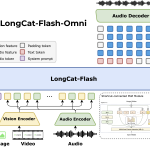Did you know that AI systems have been found to have bias ag
NegativeArtificial Intelligence
Recent findings reveal that AI systems exhibit bias against individuals with non-traditional names, often those with unique spellings or multiple vowels. This bias can lead to the exclusion of people from non-Western backgrounds in job opportunities, raising concerns about fairness and equality in hiring practices. Addressing this issue is crucial to ensure that technology serves everyone equally.
— Curated by the World Pulse Now AI Editorial System






